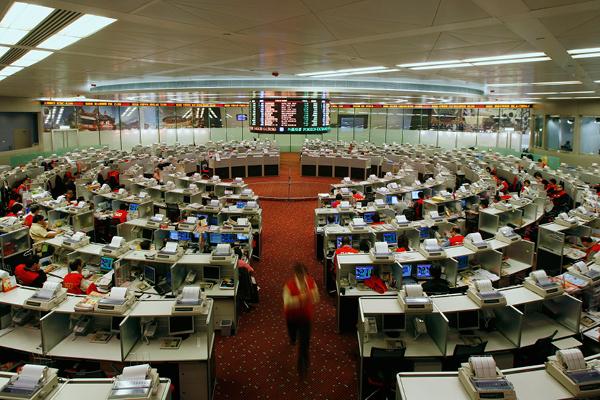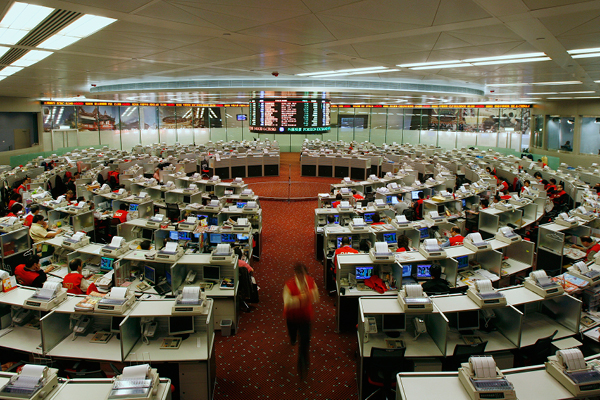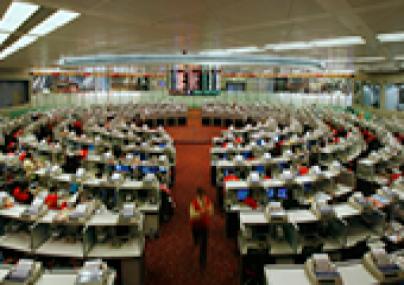
After a strong showing in 2014, Hong Kong’s IPO market is set to carry the momentum forward into 2015, with a strong pipeline of companies looking to list on the Hong Kong Stock Exchange. On the liquidity front, the signs look positive with the Hong Kong-Shanghai Stock Connect starting to bear fruit, and the introduction of a similar scheme between Hong Kong and Shenzhen’s stock markets penciled for later this year. Meanwhile, discussion over the hotly debated issue of whether Hong Kong should allow weighted voting rights has continued into 2015. Kanishk Verghese reports
After a few sluggish years, Hong Kong’s IPO market bounced back in 2014, with some big-ticket deals including WH Group’s $2.1 billion listing last July and Dalian Wanda Commercial Properties’ $3.7 billion listing in December. Data from the Hong Kong Exchanges and Clearing Group shows that 2014 saw 96 new main board listings, topping the previous record of 94 set in 2010. Meanwhile, IPO fundraising increased by 34 percent from 2013 to $29.3 billion, the world’s second-highest total behind New York, according to Dealogic data.
The momentum is expected to continue into 2015. KPMG forecasts that 110 companies will list on the Hong Kong Stock Exchange this year, with IPO funds likely to raise more than HK$200 billion ($25.8 billion). The year has started positively, with broadband Internet provider HKBN launching a $750 million IPO, and Chinese automotive glass maker Fuyao Glass Industry Group raising about $950 million in March. In the pipeline are larger deals including Chinese brokerage GF Securities’ proposed $3.6 billion listing and the $3 billion offering of Legend Holding Corp, the parent of Lenovo Group, the world’s biggest maker of personal computers. “Deal flow for the year is relatively healthy,” says Catherine Tsang, a partner at Paul Hastings in Hong Kong. “This year will be interesting because towards the end of 2013 and the first half of 2014, there was a heavy deal flow with many deals rushing to market. That was driven partly by the transition period for the new sponsor and listing regimes, which caused everyone to rush to file for their IPOs before the new provisions kicked in,” says Tsang.
On April 1 last year, new disclosure rules were enacted with the aim of improving the quality of IPOs and clamping down on fraud. Listing applications are now made public as soon as companies pass an initial checklist after filing them with the exchange. Under the previous regime, the so-called “A-1” document was filed and remained private until it was vetted and approved, while sponsors could also file incomplete documents and resubmit them without facing major penalties. Incomplete applications will now be rejected and banks and issuers submitting such applications will face an eight-week waiting period to re-file their documents. Lawyers say that the standard in terms of prospectus drafting has already been lifted, which has shortened the average prospectus vetting procedure timeline by the Stock Exchange. “But in terms of deal flow, those transition periods have passed, and Hong Kong’s IPO market is back to one that is purely driven by economics,” says Tsang.
Back to topA change to the system?
Much discussion since 2014 has centred on the issue of the “one-share-one-vote principle,” which has been in place in Hong Kong since 1989. Debate over shareholder structures was sparked after Hong Kong’s regulators rejected Chinese ecommerce giant Alibaba’s request to allow a small group of company insiders to nominate the majority of its board. It is believed that the impasse prompted Alibaba to turn to New York for its IPO, where it raised a mammoth $25 billion, the largest listing ever.
In August last year, the Stock Exchange of Hong Kong (SEHK) launched a concept paper to seek views on whether the adoption of weighted voting rights should be acceptable for companies looking to list in Hong Kong. “In our firm’s response to the concept paper, we supported the concept of a weighted voting rights structure. While sticking to the traditional one share one vote principle is an easy and simple route to take, I believe that our market should keep an open mind to market developments in order to maintain our competitiveness,” says Sabrina Fung, a partner at Deacons. “If that is the case, we believe that there should be an education process for the Hong Kong investing public,” says Fung.
The SEHK has spurred on discussion in other areas too, issuing a consultation paper in January on the potential introduction of a Volatility Control Mechanism (VCM) in the securities and derivatives markets in Hong Kong, and a Closing Auction Session in the city’s securities market. The aim of the VCM is to contain systemic risk caused by price volatility in both the securities and derivatives markets. Fung says that the introduction of a VCM would help boost Hong Kong’s competitiveness on a global platform. “The proposal to enhance the market microstructure is a positive step because it will bring Hong Kong’s trading platform in line with the guidance issued by the International Organisation of Securities Commissions (IOSCO),” says Fung. Conclusions from the consultation paper have yet to be issued, but are expected in the first half of this year.
Back to topBoosting liquidity
At the same time, liquidity in the market has been increased as a result of the Hong Kong-Shanghai Stock Connect scheme. The Stock Connect, which was launched last November, allows certain mainland investors to trade shares in designated companies listed in Hong Kong, while letting Hong Kong investors buy selected Shanghai-listed shares. At the moment, the Stock Connect imposes a number of limitations and quotas. Hong Kong investment in mainland stocks is limited to an overall quota of 300 billion yuan ($48 billion) and a daily quota of 13 billion yuan. Mainland investment in Hong Kong stocks is limited to an overall quota of 250 billion yuan and a daily quota of 10.5 billion yuan. Industry players expect the quota to be lifted gradually.
With the Hong Kong-Shanghai Stock Connect starting to find its feet, plans are also underway to set up a similar scheme to link Hong Kong and Shenzhen’s stock markets. The Hong Kong-Shenzhen Stock Connect scheme, which could be approved and launched by the end of 2015, would increase the investor range in the Hong Kong securities markets and could drive up investment volume and liquidity.
Back to topPositive outlook
As Hong Kong’s IPO market chugs along into 2015, lawyers expect to see fewer mega deals and more mid-sized listings. The proposed listings for 2015 indicate that a number of Chinese financial institutions and insurance companies will look for an IPO in Hong Kong. In early March, Deacons advised on the mid-sized listings of three healthcare, environmental and consumer retail companies. Fung expects to see more deals in those sectors in 2015, in addition to listings from Chinese banks and brokerage firms. Despite the array of factors that could affect Hong Kong’s IPO market and investor confidence – both positively and negatively – market sentiment for remains positive for the time being, with a healthy IPO pipeline of mid-cap deals for 2015.
Back to top
